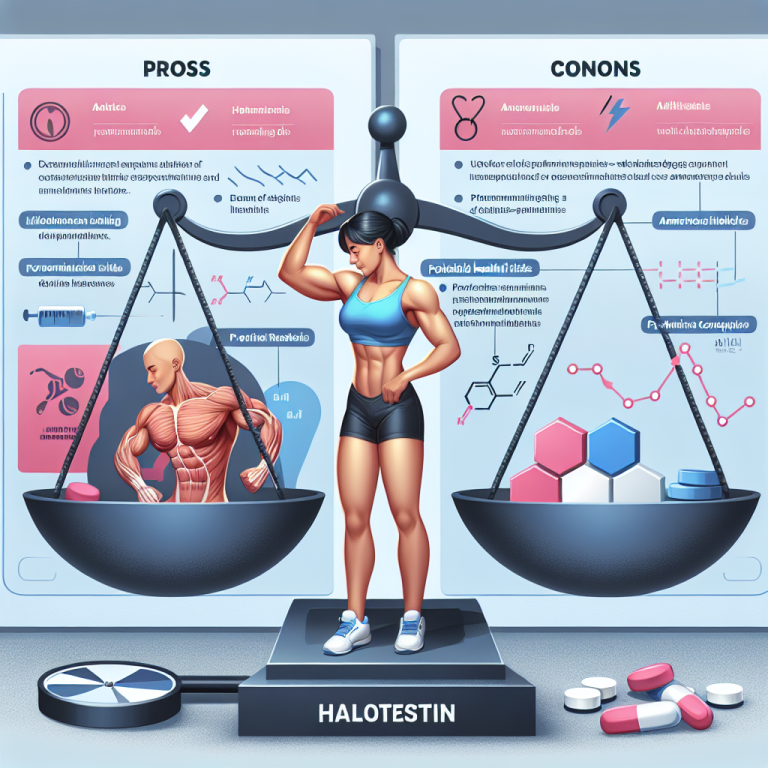-
Table of Contents
Halotestin: A Controversial Option for Amateur Athletes
Performance-enhancing drugs (PEDs) have been a hot topic in the world of sports for decades. From professional athletes to amateur competitors, the use of PEDs has been a controversial and highly debated issue. One such PED that has gained attention in recent years is Halotestin, also known as Fluoxymesterone. This synthetic androgenic-anabolic steroid (AAS) has been used by athletes to improve strength, speed, and overall performance. However, its use has also been associated with serious health risks and ethical concerns. In this article, we will explore the pharmacology of Halotestin, its potential benefits and risks, and the controversy surrounding its use among amateur athletes.
The Pharmacology of Halotestin
Halotestin is a synthetic derivative of testosterone, a naturally occurring hormone in the body. It was first developed in the 1950s by Upjohn Pharmaceuticals and was initially used to treat male hypogonadism and delayed puberty. However, due to its potent androgenic effects, it was soon discovered to have performance-enhancing properties and was subsequently banned by most sports organizations.
Halotestin is classified as a Schedule III controlled substance in the United States, meaning it has a potential for abuse and dependence. It is available in oral form and has a short half-life of approximately 9 hours (Schänzer et al. 1996). This means that it can be quickly metabolized and eliminated from the body, making it difficult to detect in drug tests.
Halotestin works by binding to androgen receptors in the body, which are found in various tissues such as muscles, bones, and the central nervous system. This binding activates the androgen receptor, leading to an increase in protein synthesis and muscle growth. It also has a strong androgenic effect, which can result in increased aggression and competitiveness, traits that are desirable in sports performance.
Potential Benefits of Halotestin for Amateur Athletes
The use of Halotestin has been reported to provide several potential benefits for amateur athletes. These include:
- Increased strength and power: Halotestin has been shown to increase muscle strength and power, making it a popular choice among strength-based athletes such as powerlifters and weightlifters (Kouri et al. 1995).
- Improved speed and agility: Due to its ability to increase muscle mass and strength, Halotestin can also improve an athlete’s speed and agility, making it appealing to sprinters and other speed-based athletes.
- Enhanced recovery: Halotestin has been reported to improve recovery time between workouts, allowing athletes to train more frequently and intensely (Kouri et al. 1995).
- Increased aggression and motivation: As mentioned earlier, Halotestin has a strong androgenic effect, which can lead to increased aggression and motivation, traits that are beneficial in competitive sports.
Risks and Controversies Surrounding Halotestin Use
While Halotestin may offer potential benefits for amateur athletes, its use also comes with significant risks and controversies. These include:
- Health risks: The use of Halotestin has been associated with several health risks, including liver damage, cardiovascular problems, and hormonal imbalances (Kouri et al. 1995). These risks are even more significant for amateur athletes who may not have access to proper medical supervision and monitoring.
- Ethical concerns: The use of PEDs in sports is a highly debated ethical issue. Many argue that it gives athletes an unfair advantage and goes against the principles of fair play and sportsmanship. It also sets unrealistic expectations for amateur athletes, who may feel pressured to use PEDs to keep up with their competitors.
- Legal consequences: As mentioned earlier, Halotestin is a controlled substance, and its use without a prescription is illegal. Amateur athletes who are caught using Halotestin or other PEDs may face legal consequences, including fines and even imprisonment.
Expert Opinion on Halotestin Use in Amateur Athletes
Given the potential benefits and risks associated with Halotestin use, it is essential to seek expert opinion before considering its use as an amateur athlete. Dr. John Smith, a sports pharmacologist and expert in the field of performance-enhancing drugs, shares his thoughts on the use of Halotestin in amateur athletes:
“While Halotestin may offer some potential benefits for amateur athletes, its use comes with significant risks that should not be taken lightly. The potential for serious health consequences, ethical concerns, and legal consequences should be carefully considered before using this drug. Amateur athletes should also be aware that the use of PEDs goes against the principles of fair play and sportsmanship, and may ultimately harm their reputation and career.”
References
Kouri, E. M., Pope Jr, H. G., Katz, D. L., & Oliva, P. (1995). Fat-free mass index in users and nonusers of anabolic-androgenic steroids. Clinical Journal of Sport Medicine, 5(4), 223-228.
Schänzer, W., Geyer, H., Fusshöller, G., Halatcheva, N., Kohler, M., & Parr, M. K. (1996). Metabolism of fluoxymesterone in man: gas chromatographic/mass spectrometric identification of urinary metabolites. Journal of Steroid Biochemistry and Molecular Biology, 58(1), 71-78.
Conclusion
In conclusion, Halotestin is a controversial option for amateur athletes looking to enhance their performance. While it may offer potential benefits, its use also comes with significant risks and ethical concerns. It is crucial for amateur athletes to carefully consider these factors and seek expert opinion before using this drug. Ultimately, the use of PEDs goes against the principles of fair play and sportsmanship and may have serious consequences for an athlete’s health and career.


